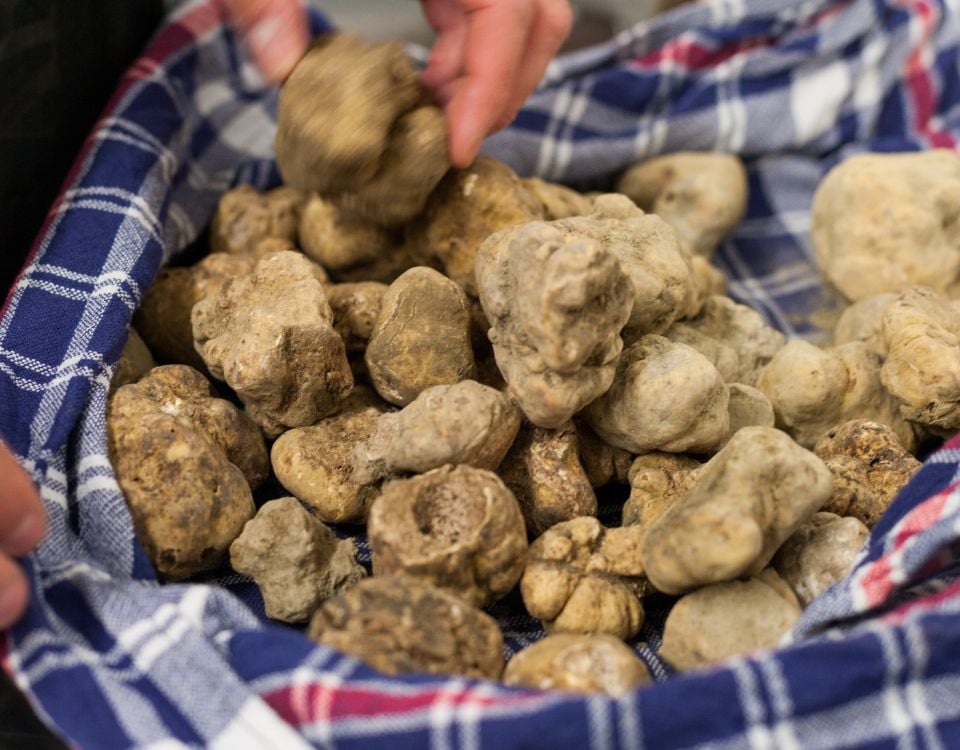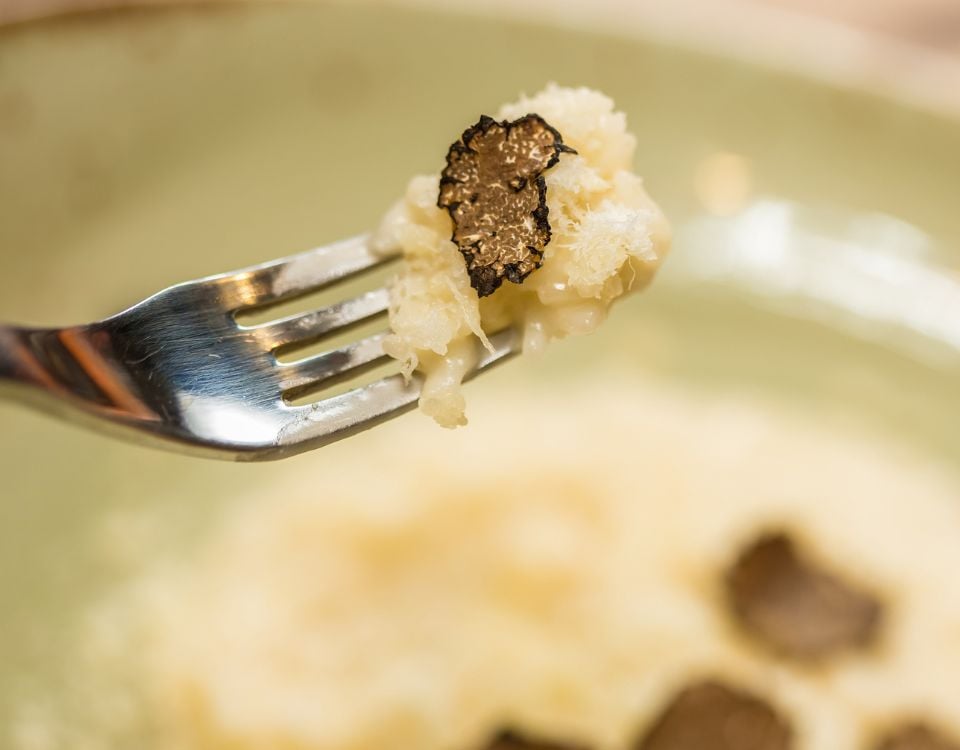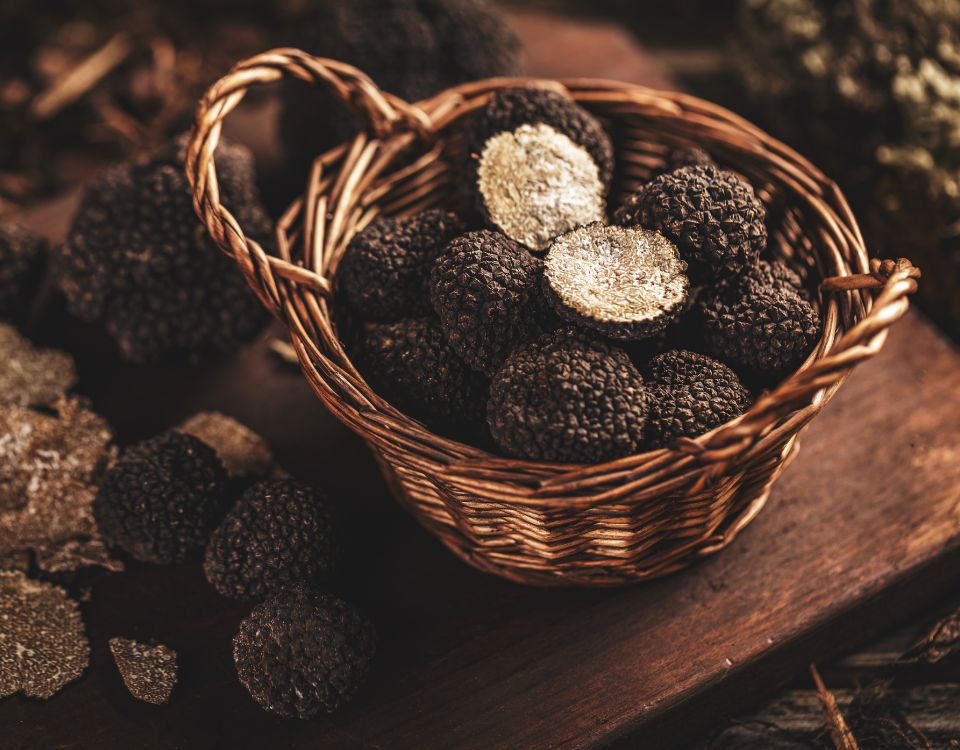Truffle in Autumn: Why It’s the Perfect Season
When people think of truffles, many immediately associate them with the autumn and winter seasons. Indeed, truffle in autumn is a well-established reality, allowing the harvest of prized varieties right when the natural environment is most favorable for the maturation of the hypogeous fungus. This article explores why autumn is the perfect season for truffles: from environmental conditions to the species that ripen, and the best ways to use and preserve the product.
Ideal Environmental Conditions in Autumn
Autumn brings with it a series of natural elements that favor the maturation of truffles. The days grow shorter, temperatures drop, rainfall becomes more frequent, and soil humidity increases — all conditions that stimulate the development of the truffle’s fruiting body near the surface of the ground. The underground mycelium, which has remained dormant for months, finally finds the right conditions to “push” the truffle upward, making it accessible for harvesting.
The broadleaf forests that host truffles (oaks, poplars, hornbeams, hazelnuts) provide shade and preserve soil moisture — valuable elements when the summer heat dries out the terrain. With the arrival of autumn rains, the soil comes back to life, creating microclimates ideal for tuber growth. Moreover, the drop in nighttime temperatures limits the development of molds or decay that could compromise the truffle’s aroma.
This combination of controlled humidity, moderate temperatures, and rich soil makes autumn the season when truffles can express their aromas and flavors at their highest potential.
Which Truffle Varieties Ripen in Autumn?
Talking about truffles in autumn also means recognizing the species that, during this period, offer the best yields and quality. Here are some of the main ones:
- Tuber uncinatum (uncinated truffle or autumn black truffle): this species ripens precisely in autumn and is among the most appreciated for its intense and persistent aroma.
- Tuber melanosporum (black winter truffle): its harvest generally begins in November and it is one of the most sought-after varieties for its aroma and gastronomic value.
- Tuber magnatum Pico (white truffle): in some regions, it may begin to ripen towards the end of summer and continue throughout autumn, though it usually reaches its full expression between late autumn and early winter.
In summary, autumn is the season when the truffle offers an interesting range of varieties, each with distinctive organoleptic characteristics and high gastronomic potential.
The Aroma, Maturity, and Organoleptic Quality
A crucial aspect that distinguishes the truffle in autumn is its ability to fully develop its aroma — the very element that makes it so prized. As harvest time approaches, aromatic molecules — volatile sulfur compounds, terpenes, and other elements — concentrate within the gleba. If the truffle is harvested before it matures, these aromas are still weak; if harvested too late, they risk degrading.
The autumn harvest allows for picking “at the right moment,” when the aroma is at its peak. In addition, the cool air and reduced humidity in the upper soil layers help preserve that aroma, which tends to dissipate quickly once removed from the earth. A truffle harvested in October or November will rarely lose its intensity if carefully stored for a few days.
It should be noted that a truffle must be firm and free of mold to be considered high quality: moist or soft surfaces indicate deterioration.
Harvesting and the Risk of Compromise
The ideal season does not mean the absence of risks. During autumn, overly rainy conditions or strong temperature fluctuations can damage truffles, compromising their internal quality or encouraging mold growth. Moreover, excessive harvesting in a short time can overcrowd the forests, leading to sustainability issues. Experienced truffle hunters balance digging frequency and leave some specimens to mature deeper in the soil.
Equally important is the delicacy of the harvest itself. It is essential to avoid damaging the gleba and to preserve the integrity of the peridium. An overly sharp blade or too much pressure can alter the truffle’s internal structure, compromising its aroma and shelf life.
White truffles have a very short lifespan — just a few days — while fresh black truffles can last up to 10–15 days, always requiring maximum care.
During transportation, it is essential that truffles do not experience thermal shocks or impacts. Fast, well-packaged shipments are crucial to ensure the product arrives in optimal condition.
Choosing the ideal moment is key to fully appreciating such a unique fungus: the truffle in autumn represents the season of excellence. Favorable environments, mature varieties, intense aromas, and an active market all converge in a period when this delicacy truly shines. By adopting proper harvesting, preservation, and culinary practices, it is possible to achieve extraordinary results that make the truffle a true star of the table.







